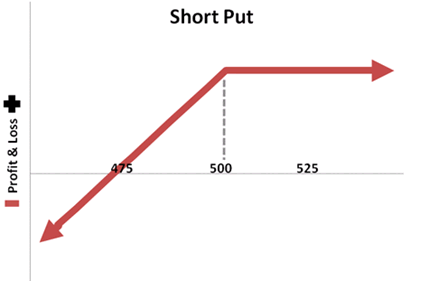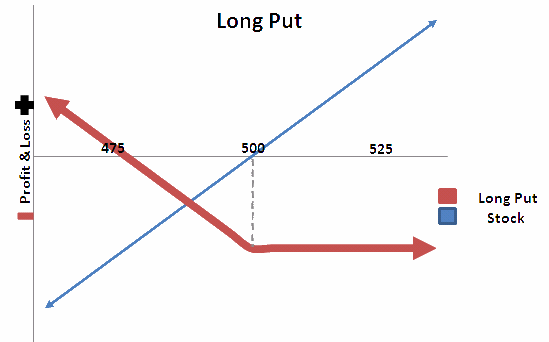Put Options Profit From Falling Stocks Without Taking on Unlimited Risk
Post on: 28 Май, 2015 No Comment

By Michael J. Carr on December 24, 2012
A put is an option contract that gives the owner the right, but not the obligation, to sell 100 shares of the underlying stock at a specified price (which is known as the strike price of the put) at any time before a specific time (the expiration date of the put).
Bearish traders would use puts because the value of the put should go up if the price of the underlying stock goes down. The potential profits for a trader owning a put are significant, but are limited because the underlying stock can not fall below zero. This is different from bullish option trades that use call contracts and have unlimited profit potential. The maximum possible risk on a put is limited to the total price paid for the option contract.
Changes in the price of the underlying stock will lead to a change in the value of the put, as will changes in the volatility of the underlying stock. If the stock becomes more volatile, the put should go up in price because there is a greater chance that it will reach the strike price by the expiration date. Falling volatility lowers the chance that the underlying stock will fall enough to reach the strike price and that should decrease the value of the put.
In addition to being driven by the price and volatility of the underlying stock, the put will also change in value based on how much time is left until the expiration date. The put will be less valuable as it gets closer to the expiration date.
How Traders Use It
A trader who is bearish on a stock or index could buy a put. There are also option contracts available on some ETFs and futures. Traders can use puts on a number of individual stocks, indexes like the S&P 500, or ETFs like the SPDR S&P 500 (NYSE: SPY ). A put is a leveraged trade that gives the trader a chance to enjoy relatively large rewards for a defined amount of risk.
As an example, consider Apple (NASDAQ: AAPL ). If AAPL is trading near $600 a share, 100 shares would cost $60,000. A trader who thinks AAPL will fall could sell the stock short, but that would require a large amount of margin and the risk a trader faces in a short position is unlimited. Instead of selling AAPL short, a trader could buy a put contract.
If a trader thinks AAPL should fall within the next few weeks, they could buy a put option that allows them to sell 100 shares of AAPL for $600 (the strike price) at anytime in the next two months (the expiration is 60 days away) for a price of about $32 per share (the option premium). This would allow them to participate in any price decline while limiting their risk to only $3,200.

If AAPL fell to $500 a share at the expiration date, the trader would make $6,800. This assumes that the trader could sell short the 100 shares for $600 and immediately buy them back in the market for $500. The premium of $3,200 would be deducted from the profits. Put traders can close their positions by selling a put contract without having to sell the stock short first and then buy it back. The profits would be the same. The options trader would make a return of 112% on their investment.
If AAPL closed above $568 on the expiration date, the trader would suffer a loss of their entire investment since selling short to cover the put contract and buying the shares back to close the short position would not cover the cost of the premium. However the traders loss is limited to $32 per share no matter how high AAPL goes. If the stock rises to $700, the trader who shorted 100 shares would lose $10,000 while the put holder would only lose $3,200.
The actual price move in AAPL would determine the price of the option. Puts can be bought or sold at any time and the trader would be able to take a profit or cut their loss at any time during the trade.
Why It Matters To Traders
Puts can be used as part of a trading strategy to profit in bear markets with limited loss potential. Traders who are bearish in the short-term can use puts to create short positions at a lower cost than selling individual stocks short. Puts also have limited risks while short positions carry unlimited risks for traders. Long-term options are available and traders can use them to create low-cost, longer-term short positions in a stock.














